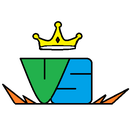Introduction: Wood Chassis for 3-wheeled Soapbox Kart
Two years ago, me and my friends decided to build a soapbox kart for the Red Bull Soapbox race. We decided to use wood as we didn't have any welding equipment or metal-cutting saws. We built it during summer and the following Easter when we're all back from university.
Step 1: Parts Needed
Tools:
Electric drill
wood saw
Wood drill bits
Materials:
Metal straps and Gusset plates
Wood (we used 60mm by 37mm cross-section)
bolts and screws
Wheels (we used wheelbarrow wheels)
Metal tube (for the wheel axles)
Step 2: Chassis
The was made from sections of structural timber, cut to length.
A 3-wheeled frame was chosen, as we'll need fewer wheels and it looks different.
Metal plates were used to assemble the sections together. We would put the sections together along with the metal straps, trace the holes in the straps onto the wood, drill out the holes, then put screws through the straps into the wood, holding the wood sections together. Multiple metal straps were used for greater strength and redundancy.
Step 3: Steering
Strong door hinges were mounted at each end of the chassis, to which short beams were also attached to.
The wheel axles were inserted into holes drilled into the short beams. The hole for the axle was drilled closer to the bottom of the short beam. This makes it stronger than if drilled in the middle, as there's more material above to support the bending of the short beam when under load.
On a longer piece of wood, eye-screws were screwed into the middle of the ends. The curved ends of the eye-screws were then loosely bolted to the end of the short beam.
We used a lever to test out the steering. It pivots around a long threaded rod, which is bolted to a plank nailed to the chassis.
Step 4: Wheels
We used cheap wheelbarrow wheels, as they're fairly large, giving a good clearance of the ground.
As they're pneumatic wheels, it will help soften the ride over bumps, as the chassis doesn't have a suspension.
The wheels are mounted on cut sections of metal tubes as an axle. Two holes were drilled at each end of the tubes. Washers where put on first, then screws installed in the holes. This keeps the tube and the wheel from sliding around.











